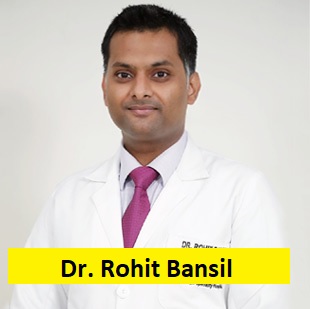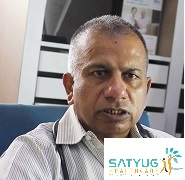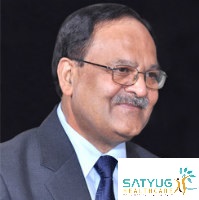DBS(Deep Brain Stimulation)for Parkinson's disease Surgery cost in India

| Surgery Name | Cost | Room-Category | Hospitalization |
|---|---|---|---|
| Parkinson's disease treatment in India | Evaluation $800-$1000$, surgery cost - 24000 | Economy | Patient - 4-5 days in a room and 1 day in ICU |
| Inclusion | Exclusion | ||
|
1.Overstay more than package days, |
||
Know More About Procedure & Surgery
What is DBS Surgery?
Deep brain stimulation (DBS) is a surgery to implant a device that sends electrical signals to brain areas responsible for body movement. Electrodes are placed deep in the brain and are connected to a stimulator device. DBS can help reduce the symptoms of tremor, slowness, stiffness, and walking problems caused by Parkinson's disease, dystonia, or essential tremor. Successful DBS allows people to potentially reduce their medications and improve their quality of life. In Parkinson’s, parts of the basal ganglia are either under- or over-stimulated. Normal movement is replaced by tremor, rigidity and stiffness. DBS of specific ganglia alters the abnormal electrical circuits and helps stabilize the feedback loops, thus reducing symptoms.
Electrodes can be placed in the following brain areas:
- Subthalamic nucleus (STN) – Effective for tremor, slowness, rigidity, dystonia and dyskinesia. Most commonly used on the way to treat Parkinson's disease.
- Thalamus (VIM) – Effective for tremor. It is often used to treat essential tremor.
- Globus pallidus (GPi) – Effective for tremor, slowness, rigidity, dystonia and dyskinesia. It is used to treat dystonia and Parkinson's disease.
Who is a candidate?
- A movement disorder with worsening symptoms (tremor, stiffness) and your medications have begun to lose effectiveness.
- Troubling "off" periods when your medication wears off before the next dose can be taken.
- Troubling "on" periods when you develop medication-induced dyskinesias (excessive wiggling of the torso, head, and/or limbs).
DBS may not be an option if you have severe untreated depression, advanced dementia, or if you have symptoms that are not typical for Parkinson's.
DBS can help treat many of the symptoms caused by the following movement disorders:
- Parkinson’s disease: Tremor, rigidity, and slowness of movement caused by the death of dopamine-producing nerve cells responsible for relaying messages that control body movement.
- Essential Tremor: Involuntary rhythmic tremors of the hands and arms, occurring both at rest and during purposeful movement. Also may affect the head in a "no-no" motion.
- Dystonia: Involuntary movements and prolonged muscle contraction, resulting in twisting or writhing body motions, tremor, and abnormal posture. May involve the entire body, or only an isolated area. Spasms can often be suppressed by "sensory tricks," such as touching the face, eyebrows, or hands.
Deep brain stimulation is also a potential treatment for:
- Epilepsy
- Obsessive-compulsive disorder
- Addiction
- Chronic pain
- Cluster headache
- Dementia
- Depression (major)
- Huntington's disease
- Multiple sclerosis
- Stroke recovery
- Tourette syndrome
- Traumatic brain injury
Preparation
Before surgery, you'll need medical tests to make sure that deep brain stimulation is a safe and appropriate option for you. You'll also need brain-imaging studies, such as an MRI, before the surgery, to map the areas of your brain to implant the electrodes.
Surgery
In DBS surgery, the surgeon places thin wires called electrodes into one or both sides of the brain, in specific areas (either the subthalamic nucleus or the globus pallidus intern) that control movement. Usually you remain awake during surgery so you can answer questions and perform certain tasks to make sure the electrodes are positioned correctly. Some medical centers now use brain imaging to guide the electrodes to the right spot while a person is asleep. Each method has its pros and cons and may not be suitable for everyone or available everywhere.
Once the electrodes are in place, the surgeon connects them to a battery-operated device (similar to a cardiac pacemaker), which usually is placed under the skin below the collarbone. This device, called a neurostimulator, delivers continuous electrical pulses through the electrodes. A few weeks after surgery, a movement disorder specialist programs the neurostimulator to help treat your unique symptoms. Your doctor will gradually tweak your DBS settings over time while adjusting your medications. Most people are able to decrease (but not completely discontinue) Parkinson's drugs after DBS. Determining the optimal combination of drugs and DBS settings — with the greatest benefit and the fewest side effects — can take several months and even up to a year.

After the Surgery
A few weeks after surgery, the pulse generator in your chest is activated in your doctor's office. The doctor can easily program your pulse generator from outside your body using a special remote control. The amount of stimulation is customized to your condition, and may take as long as four to six months to find the optimal setting. Stimulation may be constant, 24 hours a day, or your doctor may advise you to turn your pulse generator off at night and back on in the morning, depending on your condition. You can turn stimulation on and off with a special remote control that you'll take home with you. The battery life of your generator varies with usage and settings. When the battery needs to be replaced, your surgeon will replace the generator during an outpatient procedure.
Risks Involved In Surgery
Deep brain stimulation involves creating small holes in the skull to implant the electrodes, and surgery to implant the device that contains the batteries under the skin in the chest. Complications of surgery may include:
- Misplacement of lead
- Bleeding in the brain
- Stroke
- Infection
- Breathing problems
- Nausea
- Heart problems
- Seizure
- Seizure
- Infection
- Headache
- Confusion
- Difficulty concentrating
- Stroke
- Hardware complications, such as an eroded lead wire
- Temporary pain and swelling at the implantation site
Possible side effects after surgery
- Seizure
- Infection
- Headache
- Confusion
- Difficulty concentrating
- Stroke
- Hardware complications, such as an eroded lead wire
- Temporary pain and swelling at the implantation site
If you have any related query, you can send us your report on below mention email address or you can call us or whatsApp for any second opinion.
Video/tele consultation also available
E-mail address- query@satyughealthcare.com
Phone number- +91888-242-4372, +91991-065-5125
Frequently Asked Questions
The average hospital stay following implantation of the DBS leads is 1 to 2 days. Most patients are able to return home on the same day that their battery is placed.































































































